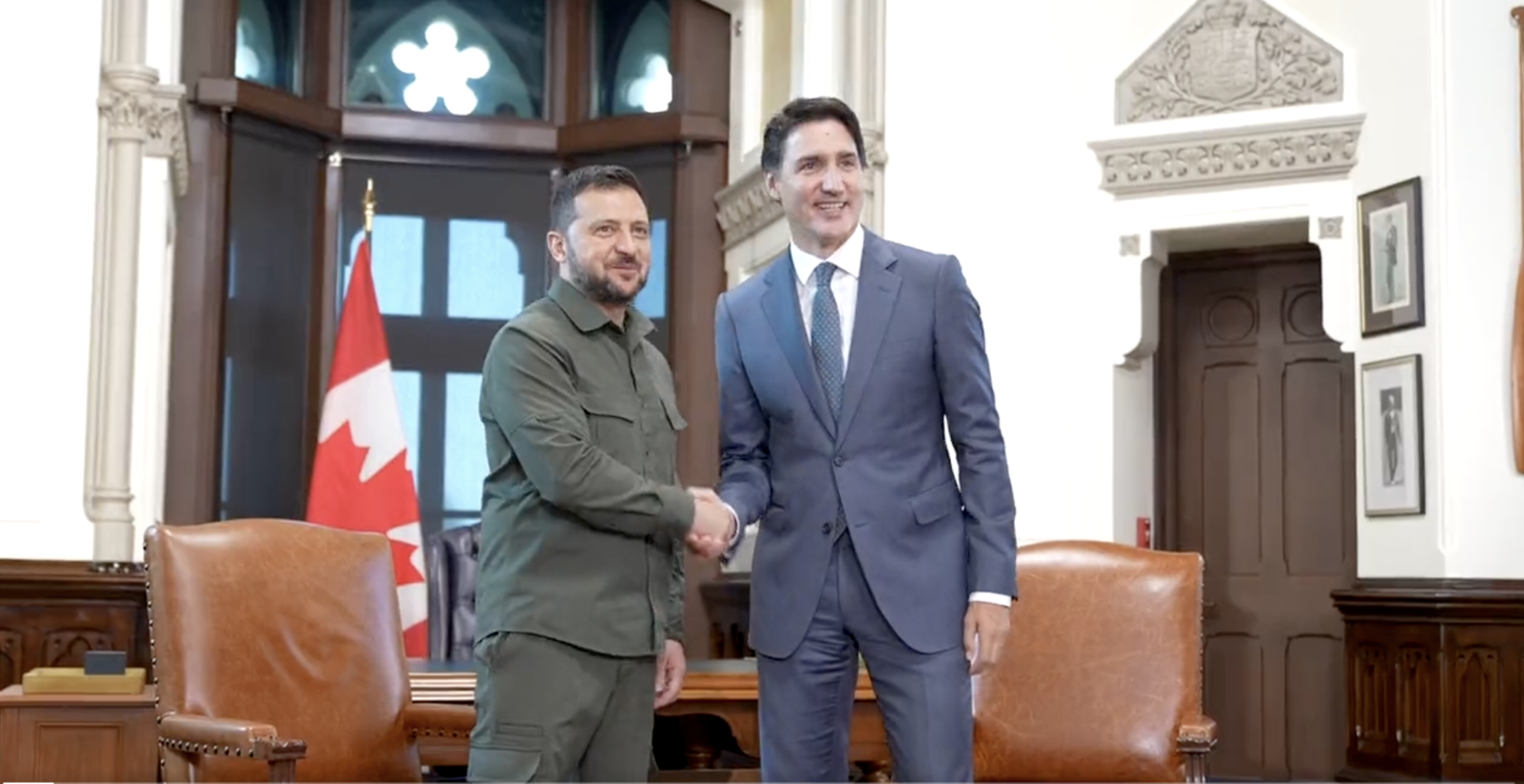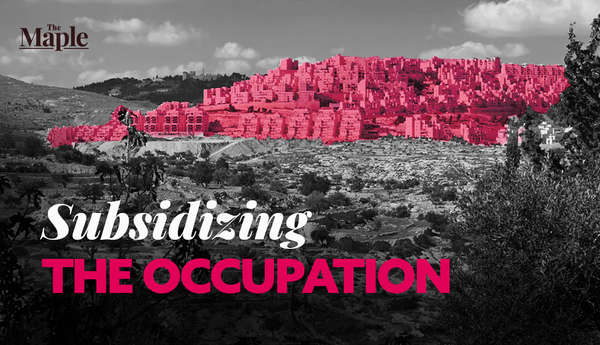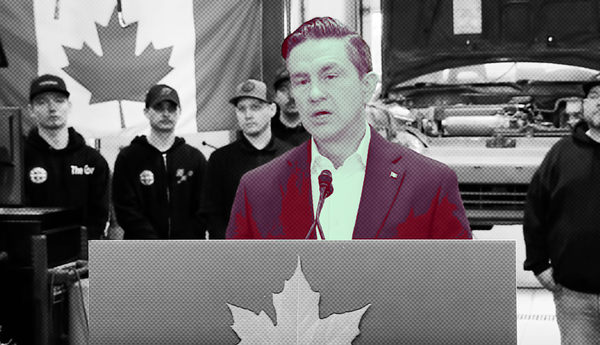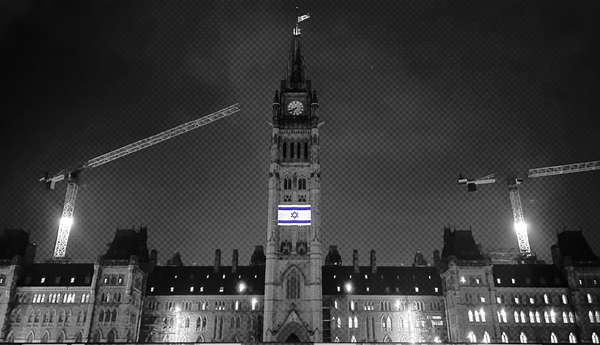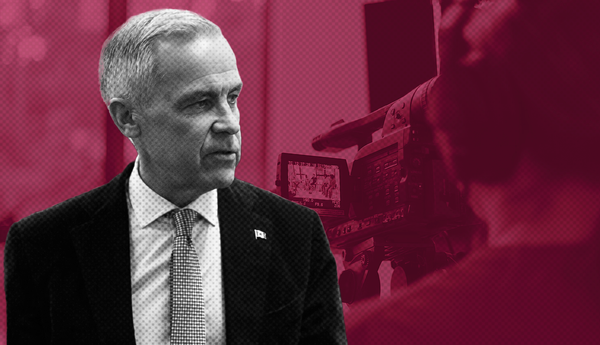Few wars have been more often and more accurately predicted than the current Russia-Ukraine war.
From the 1990s on, American and European diplomats and scholars warned that expanding NATO into Ukraine was the “brightest of all red lines” for Moscow — under any Russian leader.
At a Chatham House event in 2014, within months of the overthrow of Ukraine’s democratically elected and Russia-friendly Yanukovych government, American political scientist John Mearsheimer warned Michael McFaul, the former U.S. ambassador to Moscow, and Canadian MP Chrystia Freeland, that Putin was “telling Ukrainians and the West that they have two choices here. One is they back off. In which case he will back off.”
“Or if they don’t back off and they continue to try to integrate Ukraine into the West, he’ll wreck Ukraine before he allows that to happen. And that’s what he’s doing, he’s wrecking Ukraine. And he has all the tools to do that.”
Five years later, when Ukrainian President Volodymyr Zelensky abandoned his election promise of a peace deal with Russia and pivoted toward NATO, his chief advisor, Oleksiy Arestovych, was more precise. He said that Ukrainian moves toward NATO would prompt Russia to invade “with a probability of 99.9 per cent.”
“Our price for joining NATO is a big war with Russia,” he said, before stating that the alternative path would be to accept absorption by Russia. Arestovych then correctly predicted that the war would start between 2020 and 2022.
Now, after nearly three years of war — despite more than $100 billion of military aid from NATO countries, intense strategic and logistical support, and hundreds of thousands of casualties — the often-predicted war is approaching its predicted outcome: military victory by Russia. What will likely be decided in the first months of Donald Trump’s presidency is who will win the peace.
The general outlines of the proposals of the warring parties are already on the table. The Russian plan, as we will see, is based on the 2022 Istanbul agreement, and the Zelensky plan, backed by most of Europe and Canada, has evolved to the point where Ukraine agrees to a ceasefire and “temporarily” gives up the eastern territories currently occupied by Russia in exchange for NATO protection.
The Trump plan is expected to be a mix of the two.
But there is also a wild card in the game, and that is the gradual re-emergence of civil society in Ukraine that is attempting to stave off the complete collapse of their broken and bleeding country.
Zelensky’s Victory Plan
Zelensky’s plan is clear: “If we want to stop the hot phase of the war, we need to take under the NATO umbrella the territory of Ukraine that we have under our control.”
But NATO would at the same time recognize Ukraine’s 1991 borders as the only legitimate borders of Ukraine, which means that there would be no peace with Russia — only a ceasefire until Ukraine can get its territories, including Crimea, back “in a diplomatic way.”
Along with eventual NATO membership, Zelensky’s plan includes Ukrainian rearmament with the latest NATO weapons and quite possibly European “peacekeepers” deployed on Ukrainian territory.
As a compensation for Western support, Ukraine’s “natural resources and critical metals worth trillions of dollars,” including “uranium, titanium, lithium, graphite” will be made available to its Western partners for investment.
Canada has been firmly, even fiercely, supporting Zelensky’s victory plan. But the plan’s main drawback is that Ukraine has, for all intents and purposes, lost the war. More and more Ukrainians are refusing to fight and the military has only managed to stave off complete collapse by press ganging men off the streets and sending them to the front.
What makes Zelensky’s promise to declare a ceasefire in exchange for NATO protection particularly unworkable is that it takes two to make a ceasefire — and, according to some experts, there is no chance that Russia will agree to it if Ukraine’s NATO membership, de jure or de facto, is on the table.
Glenn Diesen, a Norwegian political scientist specializing in Russian affairs, recently paraphrased the Western position toward Russia as: “Freeze the frontlines; we won’t accept the territorial changes but […] you can hold it temporarily while we arm the Ukrainians to the teeth again and fight you another day.”
But, Diesen explained, “it’s just hard to see why the Russians could possibly accept this after suffering so much in order to finally get their victory [...] It seems preposterous. It’s not going to happen.”
The Russian Proposal
The Russian plan is based on an updated version of the Istanbul accord, which the Russians point out was drawn from Ukraine’s own proposal made to Russia in March 2022, only weeks after the invasion began.
In April 2022, the warring parties agreed that Ukraine would not join NATO and instead it would adhere to a strict neutrality, with security guarantees from Western partners on the model of Finland during the Cold War. Zelensky also agreed to guarantee Russian-language rights for eastern Ukraine.
Russia also wanted assurances that Ukraine would recognize independence for the Donetsk and Luhansk regions.
In return, Putin would withdraw his forces from all the territories occupied in February 2022 and would have no objection to Ukraine joining the European Union.
According to Arestovych, who was one of Zelensky’s representatives on the negotiating team, the ground was “90 per cent prepared for [Zelensky] directly meeting with Putin.”
Arestovych said that the Ukrainian side viewed it as a “completely” successful negotiation, and the Ukrainian delegation even opened a bottle of champagne to celebrate.
That final meeting between Zelensky and Putin would never take place. According to those who were involved in the negotiations, British prime minister Boris Johnson moved in to pressure against the agreement. The West was in no hurry to see the end of the war, which was viewed as a strategic opportunity to weaken Russia and, in the best case, could result in the toppling of Putin.
War hawks in America described NATO’s proxy war in Ukraine as “the best money we’ve ever spent” and praised Ukrainians for being willing to fight “to the last person.”
Today, the basic outline of the Istanbul accord remains the Russian position, but they have raised the stakes considerably. Now their proposal is Istanbul plus maintaining the Russian occupation of the territories under its control.
Trump’s Gambit
Putin has indicated openness to meeting with Trump to discuss peace in Ukraine. But the Russians are aware that Trump’s foreign policy picks and his past policies of providing lethal aid to Ukraine — when Obama had refused to do so — suggest that differences will likely emerge.
On January 22, Trump even suggested that he would increase sanctions on Russia if they did not make a deal with Ukraine.
The speculation in Kyiv is that even though Trump will not back Ukraine’s immediate entry into NATO, he will follow a course of rearmament with the possibility of offering Ukraine NATO membership in 20 years time.
This, most observers believe, would be categorically refused by the Russians, whose core demand is Ukrainian neutrality — not a 20 year period of rearmament before joining NATO and preparing for a new and perhaps even deadlier war with Russia.
As Mearsheimer put it: The Russians view Ukrainian NATO membership as an existential threat, “and if we refuse to accept that, and we refuse to take Ukraine in NATO off the table, you are never going to get an agreement.”
What makes the position of the new American administration even shakier is the declining popularity of the Zelensky government, with approval ratings at their lowest point since the beginning of the war.
At the same time, there is a rising demand for a peace deal with Russia. A Gallup poll in November found 52 per cent of Ukrainians favouring immediate peace talks.
This number is extraordinary considering that in Ukraine you can be arrested for treason for even suggesting the type of land-for-peace deal that a growing number of Ukrainians now seem to support.
Today, independent Ukrainian intellectuals are looking not only at the prospects of peace, but beyond that to how they can rescue their country from the devastation that will remain after the fighting stops.
Inside Ukraine, Zelensky and his Western backers are now threading a narrow path between the extreme nationalists, who threaten civil war if he makes a deal with the Russians, and a civil society which is already fighting conscription in the streets and is becoming increasingly impatient with the continuation of a devastating war that many see as already lost.
Re-emergent Civil Society
The rising demand for peace in Ukraine comes with a slow awakening of civil society that was silenced during and in the run up to the war.
In 2021, before the Russian invasion, Zelensky had already shut down much of the opposition press and put one of the leading opposition figures, Viktor Medvedchuk, under house arrest at a time when Medvedchuk’s party was slightly ahead of Zelensky’s in the polls.
Immediately after the invasion, Zelensky banned eleven Ukrainian political parties and silenced virtually all opposition and independent media.
In the words of prominent Ukrainian public intellectual Andrii Baumeister, “if we started this war as freedom against tyranny, democracy against a totalitarian regime, then today two totalitarian systems are fighting: a small totalitarian system and a large totalitarian system.”
Baumeister, who is living in exile in Germany, has been broadcasting that Ukraine will not defeat Russia on the battlefield, and that the country will almost certainly suffer territorial losses. For the peace agreement, he believes a version of the Istanbul accords is the only workable model.
But what he sees as most likely at the end of the war is the threat of “civil conflict within Ukraine.”
Ukrainian scholar Ivan Katchanovski, who is a visiting professor at the University of Ottawa, agrees that the war in Ukraine has been lost and says that even Trump cannot rescue Ukraine if he tries to prolong the war.
“It won’t change its outcome since Russia would still have a significant military advantage over Ukraine and Ukraine would suffer a defeat,” Katchanovski told The Maple.
Katchanovski also agrees that a realistic peace deal would be based on the Istanbul accords, and believes “it was always the best option for Ukraine because the war is unwinnable and the longer it continues the more devastating consequences it would have for Ukraine.”
But he is skeptical that Ukraine will agree to the terms Moscow is demanding and suggests “there could well be a powerful insurgency or even an outright civil war led by nationalists rooted in the [far-right] Bandera tradition if Ukraine signed a version of the Istanbul accord with Russia.”
Volodymyr Ishchenko, a leading Ukrainian intellectual, agrees that a coup or civil strife in Ukraine is possible if Kyiv signs a deal that the nationalists don’t approve of.
“But its success is not necessary,” Ishchenko explained in an emailed interview with The Maple. “It essentially depends on whether the Ukrainian and Western elites support the deal. If they don’t want to give Russia even more Ukrainian territory, they would be interested in supporting the Ukrainian leader who signs the deal.”
But Ishchenko also points out it could go the other way. If the elites in Kyiv and their nationalist backers refuse to negotiate for peace, there is a real “risk of domestic unrest in an exhausted Ukraine if the deal is delayed too long,” with a popular uprising against the continuation of the war.
Anti-Russian, Not pro-Ukrainian
In trying to navigate a path to peace, Ukrainian scholars have been re-examining the causes for the war and challenging the Western narrative of Russia’s “unprovoked” invasion.
Baumeister, in a July 2024 interview with the anti-Putin publication Meduza, described the war as a completely unnecessary conflict. “The fact is that the issues of European security and NATO’s advancement to the east could have been resolved 10-15 years ago, and that Ukraine, together with its Western partners, could have taken a different, more balanced position on the international arena in recent years.”
While unequivocally condemning Putin’s 2022 invasion, Baumeister also said that “We need to look at how the major players [Russia and the United States] have behaved in the last 15 years, especially in the last two or three years.”
He criticized the American and Western intransigence on the Ukraine question. “Being an uncompromising and tough guy at the expense of another country, where it’s not your cities that are being destroyed, not your people dying, is a serious score that history will present to everyone.”
Ruslan Bortnik, the head of the Kyiv-based Ukrainian Institute of Politics, told The Maple that he shares a disillusionment with the West, which he says does not have a pro-Ukrainian policy, but only an anti-Russian policy.
And there is “a big difference between anti-Russian and pro-Ukrainian policies. Pro-Ukrainian means peace and prosperity for Ukraine. The membership in the European Union and the visa issue, investment and so on. The bigger amount of Western policy is the use of Ukraine resources only for the purposes of weakening Russia.”
In fact, Bortnik singled out Canada for particular criticism for advancing the cause of the extreme nationalists in Ukraine.
“For me it’s very strange that a country like Canada with many nations, cultures, groups, ethnic groups, supported only a nationalistic vision in Ukraine. The role of Canada’s development in Ukraine is huge. But sometimes this interest was very destructive because Canada has supported a very right-wing nationalist Ukraine. It was something that was very destructive.”
Facts On The Ground
Global Affairs Canada spokesperson John Babcock said in an emailed statement to The Maple that Canada’s priority in Ukraine remains, “supporting Ukraine against Russia’s invasion,” along with supporting “Ukraine’s NATO membership as soon as conditions allow.”
Zelensky and most Western leaders are equally determined to continue the war until they can realize the plan for Ukraine’s NATO membership. But Ukraine’s growing desperation can be seen in the fact that they are now being pressured to lower the draft age to 18, as demanded by the West, even though this would likely send millions of youths fleeing toward the borders and could bring about a demographic collapse the country might never recover from.
Baumeister and other Ukrainian intellectuals think that the country might have already passed the point of no return. “It will be impossible to rebuild Ukraine,” Baumeister told Meduza.
“Many will not return to Ukraine, and these are millions of people. Many will leave if they are allowed to do so — I mean men. And for a country with a sharply reduced population without prospects for serious economic, intellectual, and cultural development, as the war drags on, the chances of establishing itself as a modern state are fading.”
Diesen agrees. “With Ukraine, I doubt it can recover. It has lost so many men, so many people have left the country. As soon as the war is over, a lot of these groups are going to turn on each other. The military, political class, [and] public are not happy with any of this. If they open the borders, more people are likely to leave than come back.”
The one possible victory for Ukraine would be if the European Union opened up an accelerated path for Ukrainian membership after the war. But the Europeans, who have been pro-Ukraine fanatics when it comes to pressing Ukraine to fight Russia, are not likely to let Ukraine into their club when the war is over. At least not in the foreseeable future.
Katchanovski believes that Europe will stop the accession talks if Ukraine agrees to neutrality with Russia. “The EU offered a quick accession path to Ukraine in order to continue the proxy war,” he said. “The EU can stop the accession of Ukraine, like it recently did in the case of Georgia, if the war ends and Ukraine becomes a neutral country.”
Eleven years later, Mearsheimer’s prediction of the wreckage of Ukraine has largely come to pass. When I listened again to the video of the event, I noticed that McFaul replied to Mearsheimer with an emphatic, “I have a different view!” Chrystia Freeland can be heard laughing at McFaul’s pushback.
By then, the trigger had already been pulled. By the spring of 2014, according to the New York Times, the CIA was on its way to embedding itself within the Ukrainian secret service and was preparing it for conflict with Russia.
Canadian and other NATO members would soon be sending in weapons and military trainers and working with the extreme nationalist forces in Ukraine to prepare it for the coming war that everyone seemed to want except for the 73 per cent of Ukrainian voters who had elected Zelensky on his promise to conclude a peace deal with Russia.
Zelensky, or more likely his successor, will sooner or later have to sign that deal. But the terms will be infinitely worse for Ukraine than it could have had in the past.
A year ago, Arestovych wrote on his X account that part of the historical tragedy of Ukraine was that it always bet on the losing side. “This was the case during the Northern War, when Mazepa bet on the Swedes, this was the case during the First World War, when Skoropadsky bet on the Germans, and it looks like we are now moving towards repeating this same history.”
But the real lesson, he added, was not to bet on the winners: “It’s about the fact that we repeatedly fail to bet on ourselves and our own interests.”
Peter McFarlane is a journalist and the author of Family Ties: How a Ukrainian Nazi and a living witness link Canada to Ukraine today.

